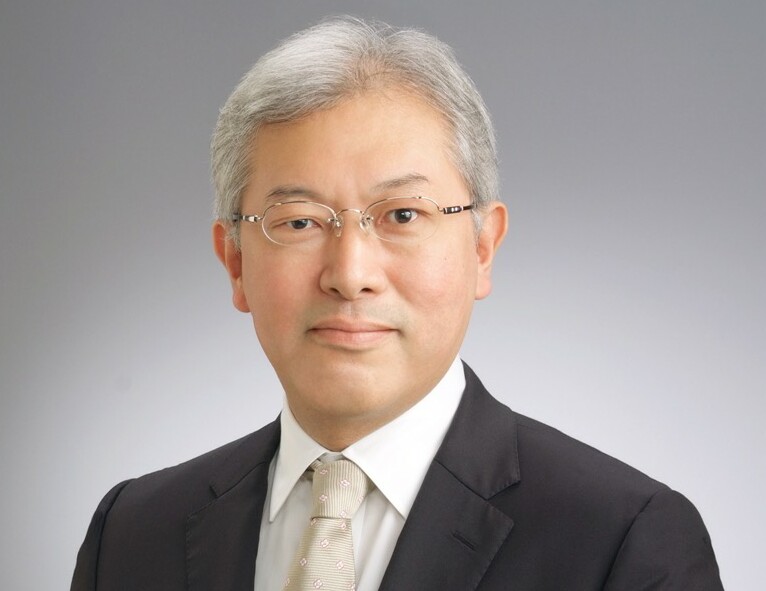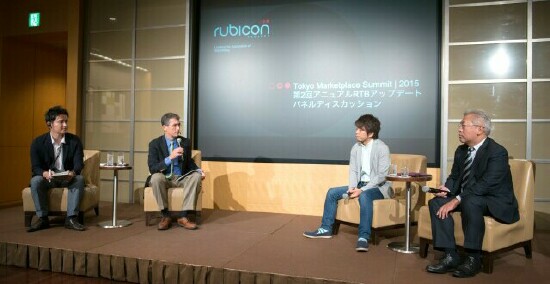Q&A: Dentsu on Automation, Programmatic and TV in Japan

First in a new series! Jay Sears, Senior Vice President Marketplace Development of Rubicon Project discusses “Automation, Programmatic and TV” with Yoshihiko Miyaichi of Dentsu Digital Holdings. The two executives appeared at Rubicon Project’s The 2nd Annual Real Time Trading Update from Japan's Buy Side in July 2015.

(Left to right) Kei Iwashima, Sales Manager, Buyer Cloud, Rubicon Project; Jay Sears; Kent Isshiki, Strategic Planning Expert, Global Business Group, Hakuhodo’s D.A.Consortium, and Yoshihiko Miyaichi, IT Project Manager, Dentsu Digital Holdings, Inc. at the Rubicon Project Tokyo Marketplace Summit.
Your Name: Yoshihiko Miyaichi
Your Company: Dentsu Digital Holdings, Inc.
Your Title: IT Project Manager
SEARS: What do you read to keep up with politics, art and culture?
MIYAICHI: Flipboard
SEARS: What do you read to keep up with friends?
MIYAICHI: Facebook, Instagram, LinkedIn
SEARS: What do you read to keep up with our industry?
MIYAICHI: AdExchanger, ExchangeWire, AdAge, Markezine
SEARS: What’s your favorite commercial of all time?
MIYAICHI: Som Sabadell flashmob -- Banco Sabadell
SEARS: With regards to advertising automation and programmatic, what are Dentsu’s three biggest initiatives in Japan in 2015?
MIYAICHI:
- PMP: Dentsu partnered with Google to expand PMP market in Japan.
- IPM: Cyber Communication Inc. Division to optimize publishers revenue using several SSP and exchange
- Dentsu IO: Partnered with US Treasure Data Inc and Classmed Inc to analysis client data.
SEARS: On average companywide across Japan -- out of each $1.00 spent on media (all media, not just digital) by one of your advertisers, how much today (in 2015) is spent on automated or programmatic channels?
MIYAICHI: $0.08 USD. From Dentsu 2014 advertising spend in Japan. It explains the Japanese market. Advertising spend was 61.5 billion USD, digital spend was 8.2 billion USD, operational ad spend was 5.1 billion USD (this includes search, ad networks and DSP spend).
SEARS: What will this number be in 2017?
MIYAICHI: $0.09USD. Growth for all the advertisement spend will be 2%. For digital advertisement growth will be 15%.
SEARS: Tell us the about the Japanese operations ofDentsu Digital Holdings.
MIYAICHI: We are currently working on automating operations. But there’s a lot more to do to make it better. Compared to digital media there’s too many people involved for revenue or profit.
SEARS: Draw an analogy between the automation of television and a baseball game. Are we in the pre-game? Still driving to the stadium?
MIYAICHI: Automation for TV is still kind of far away. There is no infrastructure to automate TV and the content rights issues are complicated.
SEARS: How can advertising automation help the strategy and planning functions (directly or indirectly) at an advertising agency?
MIYAICHI: Automating advertisements will enable people to focus on strategic planning instead of the buying and selling process. Automation also enables the use of data in both the planning and buying process making advertising more efficient.
SEARS: Can linear TV be automated, yes or no?
MIYAICHI: Yes. There are many issues in the automation of TV. It will take time to automate but I think it will be automated in the future.
SEARS: What two or three events or happenings will accelerate the automation of television?
MIYAICHI:
- When creating content, thinking about contents rights for online usage will be common in the future.
- Digital document transmission between agencies and TV stations will be common.
- Watching content on the Internet will be common and watching on linear TV will decrease.
SEARS: Transparency -- on media costs, on data, on inventory -- has become a lightning rod issue. Should transparency be a negotiated benefit for the advertiser client, yes or no?
MIYAICHI: Yes. Transparency will reveal each player’s contribution level (rate) and enable the right profit allocation.
SEARS: Which of the following will accelerate the automation of site direct (direct orders) budget? Pick all that apply:
- Dynamic access to all publisher inventory [vs. just “remnant” or “auction”]
- Ability to leverage publisher first party data
- Ability to leverage advertiser first party data [against all publisher inventory, especially premium]
- Availability of rich media, expandable units and larger IAB Rising Star formats
- Ability to more easily curate audiences for specific advertisers across the premium content of multiple publishers
- All of the above
MIYAICHI:A, B, C and E. Utilizing publisher’s data will enable Automation.
SEARS: If you could go to the airport right now with friends or family and fly anywhere in the world for vacation, who would you take and where would you go?
MIYAICHI: I would go to New Zealand with my family and enjoy my vacation at a winery that’s owned by my friend.
SEARS: If you could create an endowment to fund any existing non-profit you designated, what lucky non-profit organization would that be?
MIYAICHI: It’s not non-profit but I want to sponsor Internet.org and [help] 5 billion people use the Internet.
SEARS: What is your favorite restaurant in the world?
MIYAICHI: My favorite Restaurant is Kane Sushi. It’s located in Kanda Jinbouchou and they provide traditional Japanese Tokyo Sushi. The service and sushi are fantastic.
SEARS: Thanks, Yoshihiko-san!
The opinions and points of view expressed in this commentary are exclusively the views of the author and do not necessarily represent the views of MediaVillage/MyersBizNet management or associated bloggers.


